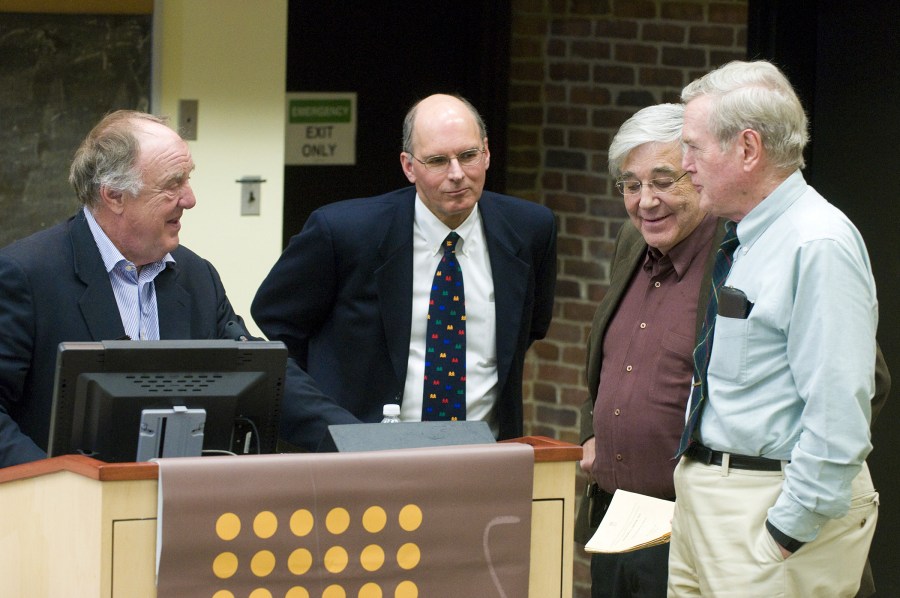
Following his recent Discovery Lecture, Richard Lerner, M.D., talks with, from left, Sam Santoro, M.D., Ph.D., Billy Hudson, Ph.D., and Robert Collins, M.D. (Photo by Mary Donaldson)
Lecturer distills chemistry of Goodpasture’s disease
How does the body know what is foreign? And why does this recognition sometimes break down and lead our immune systems to attack our own bodies?
For at least one autoimmune disease, the answer comes down to chemistry, according to Richard Lerner, M.D., president and CEO of The Scripps Research Institute, who delivered last week's Discovery Lecture.

The disease is triggered when the patient's immune system wrongly attacks “Goodpasture antigens” in the basement membrane of kidney glomeruli and lung alveoli.
The reason the immune system attacks what should be recognized as “self” proteins is due to chemical modifications of these proteins. In the case of Goodpasture's disease, the chemical modification is a nitration of host proteins, apparently sparked by an initial immune response. The chemical modification then creates a host protein that looks just foreign enough for the host immune system to attack.
“Host protein modification is the 'shrapnel' of (immune) defense,” said Lerner, who is a member of the National Academy of Sciences and a foreign member of the Royal Swedish Academy of Sciences.
Although Goodpasture's disease is rare, he said, the decades of research into the disease's mechanisms have revealed much about normal biology.
“In medicine, if we can find out how things go wrong, we can also understand the mechanisms for how things go right.”
For a complete schedule of the Discovery Lecture series and archived video of previous lectures, click here.













